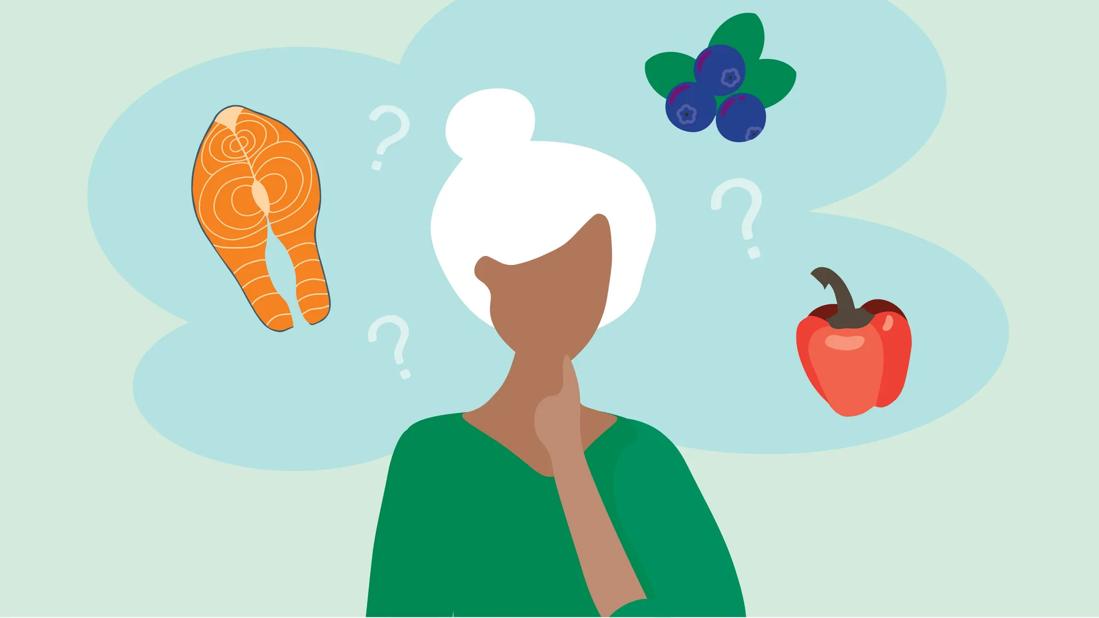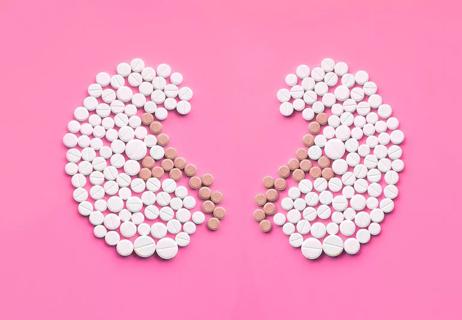A renal diet is designed to cut out sodium, phosphorus and potassium

When you eat and drink, your body absorbs nutrients needed for your body to work properly. Most of the nutrients and minerals your body doesn’t need are carried through your blood to your kidneys. Your kidneys filter out those excess nutrients and make urine. But if you have kidney disease, some nutrients can build up and damage your kidney, causing further kidney failure.
Advertisement
Cleveland Clinic is a non-profit academic medical center. Advertising on our site helps support our mission. We do not endorse non-Cleveland Clinic products or services. Policy
A renal diet is a diet that becomes increasingly more restrictive as your kidney function declines. It starts out with having you limit your salt and the amount of protein you eat. A full renal diet is designed for people who have advanced or end-stage kidney disease and need dialysis or when their kidneys are temporarily damaged and may recover over time.
Overall, eating lots of fruits, veggies, whole grains and moderate amounts of protein while exercising on a regular basis and addressing underlying medical conditions are the best ways to keep your kidneys working properly. But if you do have kidney disease, a renal diet can help slow down the disease before it progresses and worsens.
Registered dietitian Susan Meyer, MS, RD, shares which foods are good for you in a renal diet and which foods you should completely avoid.
Kidney disease is a progressive disease that gets worse over time.
“You don’t start with your kidneys failing,” says Meyer. “Your kidneys fail over time, so in order to lengthen that time as much as possible, you have to start adjusting your diet to try and maintain what kidney function you’ve got.”
A renal diet is often combined with a diabetic and/or heart-healthy diet to help manage your blood sugar levels and blood pressure, and help reduce blood cholesterol. Kidney disease doesn’t always happen inside a vacuum; rather, it can happen alongside other conditions like diabetes and heart disease. By focusing on a diet that helps address each condition, you increase your chances of prolonging your kidney function. A registered dietitian can help you with coordinating diet decisions to best meet the condition you’re trying to improve or prolong.
Advertisement
Early on in a renal diet, you’ll want to focus on minimizing your meal portions and cutting back on the amount you eat. This can help with diabetes and heart disease if you have them.
“You stop eating three pork chops and instead maybe have one,” says Meyer. “Instead of a half a dozen eggs a week, you only have two or three.”
And as things progress, you start cutting out certain foods that directly impact your kidney function.
“The renal diet is for someone whose kidneys are working 5% or not working at all,” says Meyer. “It can be kind of tricky because people don’t like to hear they can’t eat all the things they like to eat.”
The renal diet is largely about cutting out the foods that don’t serve your kidneys well. But there are some foods like vegetables, fruit and protein that are good for you when eaten in smaller doses. The main thing you want to focus on are foods that contribute to your overall healthy diet.
Red bell peppers are a good source of several vitamins, antioxidants and fiber. They’re low in potassium, phosphorus and sodium, so you can continue eating these even as your kidney disease develops.
“Have a 1/2 cup a day and try eating them with seasoned meats, pasta dishes, casseroles or eat them raw in green salads, tuna or chicken salads, cold pasta salads or as snack foods with dips,” suggests Meyer.
Berries are low in calories and sugar and high in fiber. They also have antioxidant and anti-inflammatory properties while being naturally low in sodium, phosphorus and potassium. Meyer suggests incorporating one 1/2 cup a day into your diet.
“Berries can be eaten as snacks, as part of salads, in cereals, added to muffins, pancakes or waffles,” says Meyer. “They can easily be frozen and used later for smoothies, too.”
“Fish are good sources of high-quality protein and they have healthy anti-inflammatory omega-3 fatty acids,” says Meyer.
Although they can contain moderate amounts of potassium and phosphorus, salmon, cod, halibut and tuna are naturally low in sodium. Meyer suggests eating fish two to three times a week in 2- to 3-ounce portions.
If you have kidney disease, you’ll need to control the amount of sodium, potassium and phosphorus you have in your diet. Everyone’s bodies handle food differently, so you’ll want to discuss your specific and individual diet needs with your healthcare provider or the registered dietitian at your dialysis center. In the meantime, here are some general tips to follow for a renal diet.
Sodium is a mineral found in salt (sodium chloride). And it’s one many of us have come to rely on as a seasoning for most foods. Unfortunately, it’s one of the first minerals to cut back on in a renal diet because it directly impacts your body’s ability to hold on to water.
Advertisement
“The more fluid that’s in the body, the harder your heart has to work moving that fluid around and the harder the kidneys have to work excreting that fluid if it’s above and beyond the level your body needs,” explains Meyer. “We don’t hang on to fluid. We bring it in and we get rid of it.”
It’ll take time for you to get used to reducing the salt in your diet. However, reducing salt/sodium is an important tool in controlling your kidney disease.
Here are some suggestions:
Advertisement
When your kidneys don’t work properly, potassium builds up in your blood. This can cause changes in how your heart beats and possibly even lead to a heart attack.
Potassium is found mainly in fruits and vegetables, as well as milk and meats. You’ll need to avoid certain fruits and vegetables and limit the amount of others.
Potassium-rich foods to avoid include:
Canned fruits usually have lower amounts of potassium than fresh ones. Be sure to pour off the juice before you eat the fruit.
Potatoes and sweet potatoes need special handling to allow you to eat them in small amounts. Peel them, cut them into small slices or cubes and soak them for several hours in a large amount of water.
When you’re ready to cook them, pour the soaking water off and use a large amount of water in the pan. Drain this water before you prepare them to eat.
“Phosphorus is usually the last mineral that we start having problems with,” says Meyer. “When you get to stage four kidney disease and you’re about to go on dialysis, this is when your kidneys are no longer effectively filtering out this mineral.”
Advertisement
Phosphorus is another mineral that can build up in your blood when your kidneys don’t work properly. When this happens, calcium can be pulled from your bones and can collect in your skin or blood vessels. Bone disease can then become a problem, making you more likely to have a bone break.
Dairy foods are the major source of phosphorus in the diet, so limit milk to 1 cup per day. If you use yogurt or cheese instead of liquid milk, have only one container of yogurt or 1.5 ounces of cheese per day.
Some vegetables also contain phosphorus. Limit these to 1 cup per week:
Certain cereals should be limited to 1 serving per week. These are:
White or Italian bread and low-salt crackers made with white flour have less phosphorus than whole-grain bread and crackers.
Soft drinks contain phosphorus, so only drink clear ones. Don’t drink Mountain Dew® (any kind), colas, root beers, Dr. Pepper® (any kind). Also, avoid Hawaiian Punch®, Fruitworks® and Cool® iced tea. Beer also has phosphorus, so you’ll want to avoid all kinds.
“Everybody’s kidneys are designed to fail if you live long enough,” says Meyer. “But for those folks whose kidney function is failing a lot faster than they’d live normally, the renal diet can help.”
Learn more about our editorial process.
Advertisement

The supplement is OK for most people and may offer some potential benefits for kidney health

You can live a long, healthy life with one kidney — but protecting your kidney health is key

Stay hydrated, eat a well-balanced diet and exercise regularly to keep these vital organs in good shape

Learn which drugs and supplements can damage your kidneys

This starchy root vegetable is a staple in many global cuisines — but it has to be prepared correctly, or it can cause serious concerns

These delicate green sprouts can give you an extra dose of vitamin K and other nutrients — but they’re not safe for everyone

Edamame, lentils and chicken breast are good sources of protein

This powerful antioxidant does more than fight colds — it keeps you healthy inside and out

Start having sex about 72 hours before ovulation, then at least every other day during your fertile window

Attachment theory suggests that your earliest relationships shape connections throughout your life

It isn’t a recognized mental health disorder, but research shows that problematic social media use can negatively affect your mental health, self-esteem and sleep